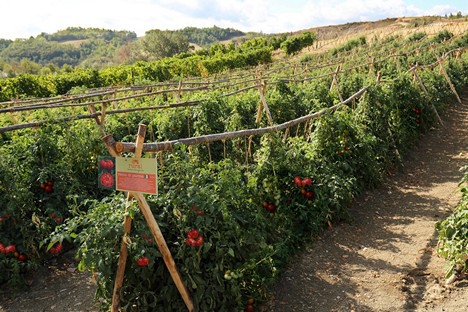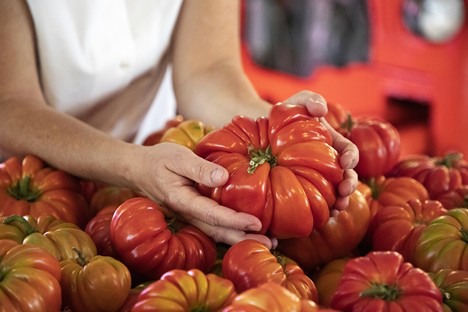The harvest of the Riccio di Parma tomato, an ancient variety that has been rediscovered and could become a widespread crop in the hills of Parma, is underway. Currently, three companies have joined the project, but the cultivation is open to other interested parties as well.

"This year we are growing about 14,000 plants using organic farming techniques. The weather has helped us, and the tomatoes are healthy, with a high Brix value and an intense red color. They are sold at the market for about €3.80 per kilo," said Gabriele Colla, president of the association.
The plants are grown with supports for vertical growth and each plant produces 2-3 tomatoes that, in the first flowering, can reach 1.2 kg each. Thereafter, the size decreases slightly in the final stages, but always remains very large.
"The Riccio di Parma tomato is ribbed and very sweet, with a slightly acidic edge. The skin is thin, making it suitable only for hand-harvesting. This is one of the reasons it has fallen into disuse, as it cannot be harvested mechanically. The seedlings, which develop indefinitely, can grow up to two and a half feet tall. It can be eaten alone in salads or with other vegetables and is also suitable for sauces."

The member farms are Agricola Colla (in Corcagnano), Agricola Centrale della Frutta (in Bannone di Traversetolo) and Agricola La Torre in Pilastro di Langhirano. Following Professor Carlo Rognoni's lead, the Associazione degli agricoltori custodi del Riccio conducted studies and seed selections in collaboration with the Università Cattolica del Sacro Cuore of Piacenza to revive the cultivation of this indigenous variety.
Professor Rognoni later saw its potential, especially in regard to preserves. Thanks to his determination, many followed him and the cultivation of Riccio di Parma became an integral part of the local economy, which is now being revived.
Source: www.pomodororicciodiparma.it
